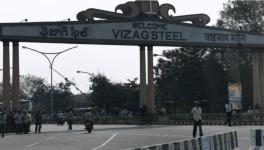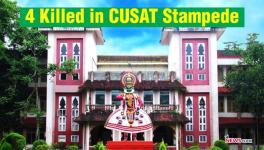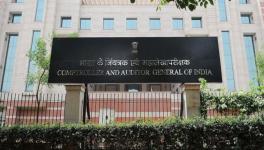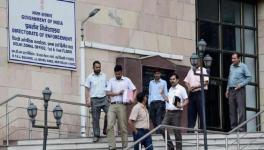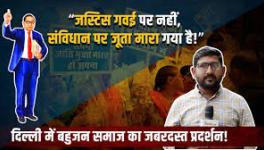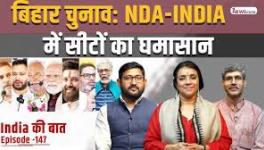The Strange 2G Judgement: CAG and the Supreme Court at Fault, Not A Raja
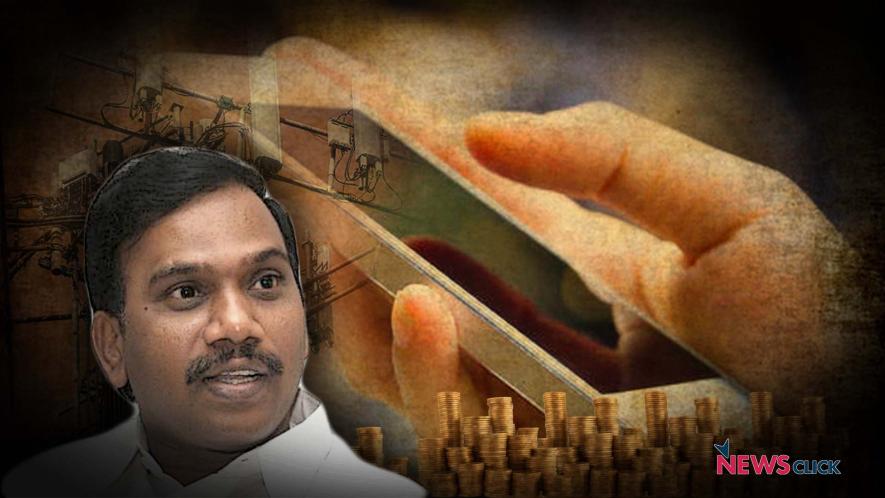
Newsclick Image by Sumit
The Judgement by Justice OP Saini in the 2G case, which acquits all the accused, has justifiably created a fresh controversy in the country. We are told by the Congress and its sympathisers that the entire 2G case was a figment of the CAG’s imagination and the media, that the CAG and the Supreme Court were completely at fault, and A Raja, the then minister of Communications and IT, and the UPA were not at all to blame.
We could have accepted the argument that the prosecution could not show criminality. But OP Saini’s Judgement goes beyond that. The judge seems to argue that let alone a crime, there is no evidence of a loss to the exchequer; the furore in the case was only due to “media”; and even if there were wrong decisions, by the department of telecom, A Raja, the telecom minister was not to blame. He was merely an innocent babe in the woods, misled by department of telecom officials. To quote the judgement, “Thus, some people created a scam by artfully arranging a few selected facts and exaggerating things beyond recognition to astronomical levels.” Did these people include the CAG? The Supreme Court?
While the Special Court examined the question of criminality of A Raja and others, in the award of licenses, CAG and the Supreme Court examined a different set of issues. The CAG was looking at the loss to the exchequer. The Supreme Court examined whether the allotment of licenses was in accordance with the constitutional provisions of equality before law.
CAG examined whether the exchequer lost money due to certain policies and procedures followed by A Raja? Its conclusion was it did, and worked out three possible ways of looking at this loss: the presumptive loss of Rs 1,76,000 crore based on the 3G auction; or 67,000 crore based on S Tel’s offer to the department of telecom for a pan Indian license; or Rs 58,000-60,000 crore based on the equity sale of Swan Telecom and Unitech. This is against the amount of Rs 12,386 crore that the country did earn by allotting licenses on a “first cum first served” basis. The figures are tabulated below.
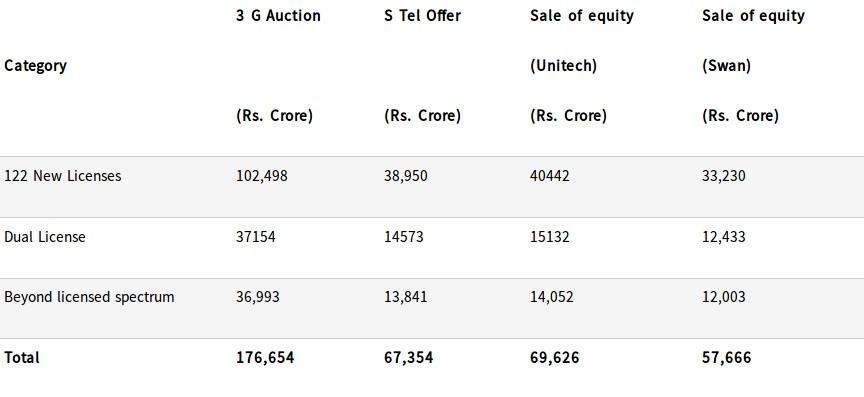
Of course all such calculations are of national loss. Unless we replay the past, there is no way of knowing what would actually have happened and compare the two.
The CAG did not suggest that if the 2G spectrum had been auctioned, then the government would have received Rs 1,76,000 crores. Instead, it gave a range of possible amounts the exchequer would have received, as opposed to the actual amount that it did, a paltry Rs 12,386 crore. The figure of loss that the CBI had put in its charge sheet was considerably lower – about Rs 22,000 crore for 122 licenses (as against Rs 33,230 core computed by CAG based on Swan’s equity sale above).
The Supreme Court examined the issue from the point of view of what is legally permissible for a government to do when parting with a scarce resource. It held that any procedure that is followed must be fair and transparent, which the A Raja policy of first-come-first-served, was not. The Supreme Court also blamed the TRAI’s recommendations as lopsided, and this was used by the minister A Raja and by the DoT, to gift the nation’s precious resources at throw-away prices. It might be noted that Nripendra Mishra, the then TRAI chairman, is currently the principal secretary to the prime minister.
The case before the Special Court’s judge, OP Saini was whether this policy and the award of licenses to specific parties was the result of a criminal conspiracy and other criminal acts. Evidence that show the policy harmed the country, was arbitrary, or unfair is certainly an element, but it must also go hand-in-hand in establishing criminality. In the Supreme Court 2G case, it was also a civil matter, while in the Special Court, it was a criminal matter. In criminal trials, the standard of proof is ''beyond all reasonable doubt'', while in a civil matter, it is ''preponderance of probabilities''. The fact that the prosecution could not prove criminality to the satisfaction of Justice Saini, does not constitute that the country suffered no loss. Or that the principle of distributing scarce natural resource, can be the same as distributing cinema tickets.
Why did both the CAG and the Supreme Court find value of the license, and the way licenses were distributed, as faulty?
A Raja decided that the price discovered in the 2001 auction for the 4th cellular operator of Rs 1,658 crore, would be the cost of an all India license in 2008 and each state license would be also pegged at this 2001 auction price. The number of cellular subscribers were only four million at that time. By 2008, it was 350 million – the market had grown by 75 times! Clearly, the value of spectrum in 2001, when there were a much smaller number of consumers, is very different from its value, when the market had expanded by 75 times. That the market price was much higher is validated by S Tel offer to DoT of 13,700 crore in 2007 for a pan Indian license.
The second issue was the way the first-come-first-served policy was manipulated to award licenses and spectrum to parties that were close to A Raja. The heart of the scam was that he first kept a low price of the license, and then manipulated the first-come-first-served queue to award the licenses to his favoured parties.
In India, the spectrum became a part of the license of the cellular operators, as a certain amount of spectrum was clubbed with the license. Without spectrum, the license has little value, as no cellular operator can provide services. Before Raja’s first-come-first-served policy, it was understood that licenses will be given only when there is spectrum, and the award of licenses would take place based on a first-come-first-served queue. Between 2001 and 2008, available spectrum was little. It was only after defence and other departments vacated some spectrum, it became available and the issuing of new licenses assumed importance.
Raja’s curious “method” of rewarding friends, was to separate the spectrum from the license application. He first announced that the licenses will be handed out on a first-come-first-served basis, with the cut off date for applications as of October 1, 2007. On January 10, 2008, DoT uploaded a new press release, stating that the cut-off date would be taken as September 25, 2007. The press release also asked the companies to submit their demand draft – of up to Rs 1,658 crore – between 3.30 pm and 4.30 pm on the same day. Those who fulfilled these conditions of the grant of a license then secured spectrum before others.
Raja argued against auctioning the spectrum/license and sticking to 2001 prices. In his view, if the price of the spectrum/license is low, the cost of service would also be low, and therefore more affordable to the consumers. If this was indeed the argument for not auctioning the license, the logical step would have been then to provide a lock-in for the new licensees, at least for a period of three years. Raja made no such attempts, even diluting the restrictions on mergers.
Consequently, Unitech sold its shares to Telenor: 67.25 per cent shares were transferred at a price of Rs 6,120 crore to Telenor Asia. Similarly, Swan Telecom sold 45 per cent of its shares for $900 million (or Rs 4,113 crore) at 2008 prices. In other words, Swan and Unitech shares were valued to 5-6 times the license price they had paid, making huge windfall profits, when their only asset was the license. In effect, this method of giving out licenses was tantamount to allowing those, who had secured cheap licenses at 2001 prices, to conduct a private auction and realise windfall profits.
Get the latest reports & analysis with people's perspective on Protests, movements & deep analytical videos, discussions of the current affairs in your Telegram app. Subscribe to NewsClick's Telegram channel & get Real-Time updates on stories, as they get published on our website.










